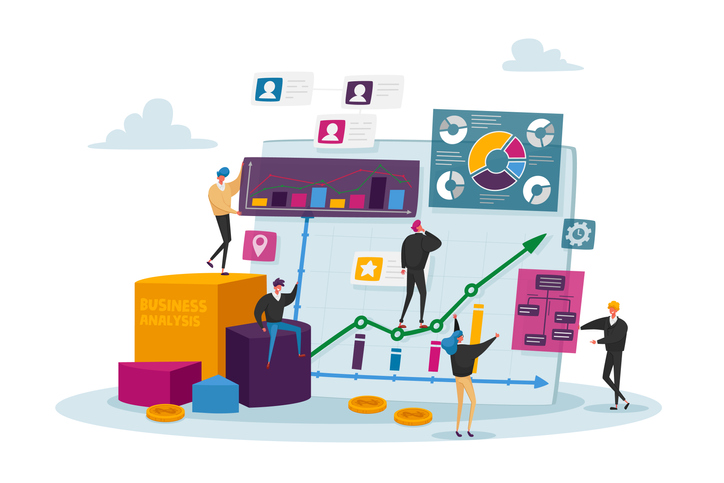Key Insights for Aspiring SAFe Agilists to Boost Group Partnership
Wiki Article
SAFe Qualification: Encouraging Leaders in Scaled Agile Frameworks
The landscape of job monitoring is progressing, and SAFe Certification stands as a pivotal component for leaders seeking to execute the Scaled Agile Framework properly. This accreditation furnishes professionals with necessary skills to promote cooperation and innovation within their groups, inevitably improving business performance. Nonetheless, the journey to ending up being an accredited SAFe leader entails more than simply getting knowledge; it encompasses understanding the nuanced duties and responsibilities within nimble atmospheres. As we explore the ins and outs of SAFe Qualification, the implications for management efficiency and business success warrant much deeper examination.Comprehending SAFe Accreditation
SAFe qualification, which represents Scaled Agile Framework qualification, is a credentialing program made to equip specialists with the understanding and abilities needed to apply agile practices at range within their companies. The SAFe framework offers a structured approach that aids organizations align their groups and handle larger projects effectively, guaranteeing that dexterous techniques are applied regularly across numerous levels.The accreditation includes different functions, consisting of SAFe Agilist, SAFe Specialist, and SAFe Program Professional, each focusing on various facets of the framework. The program highlights the value of lean principles, constant distribution, and collaboration among groups, fostering an environment helpful to development and efficiency.
Participants undergo strenuous training that incorporates academic understanding with useful application, enhancing their ability to lead active changes. The curriculum includes subjects such as nimble teams, program implementation, and portfolio administration, making certain that certified professionals are skilled in all aspects of the SAFe approach.
Benefits of SAFe Certification
Acquiring a SAFe qualification uses various advantages for experts aiming to enhance their professions in active job monitoring. It outfits individuals with a detailed understanding of the Scaled Agile Structure, allowing them to efficiently implement dexterous principles across big organizations. This expertise is vital as services significantly embrace agile methodologies to boost performance and adaptability.Furthermore, SAFe qualification enhances a prospect's marketability and profession leads. As companies look for certified experts to lead their active transformations, qualified individuals can command greater salaries and stand out in an affordable job market. Getting this accreditation shows a dedication to continuous learning and expert growth, which is extremely pertained to by companies.
Networking possibilities likewise develop from SAFe certification, connecting individuals with an area of like-minded professionals and market leaders. This can bring about understanding, collaboration, and mentorship sharing, further improving one's professional experience.
Lastly, accredited professionals are typically much better equipped to cultivate a culture of collaboration and development within their groups, driving successful results in active jobs. In general, the benefits of SAFe accreditation are manifold, making it an important financial investment for those in the active project management domain name.
The Accreditation Process
The journey to accomplishing SAFe certification entails an organized process made to make sure prospects are well-prepared for nimble leadership roles. This procedure normally starts with choosing the appropriate SAFe certification that aligns with one's career goals and organizational requirements, such as SAFe Agilist, SAFe Practitioner, or SAFe Program Expert.Candidates are then motivated to get involved in a detailed training course, normally carried out by a certified SAFe fitness instructor - Leading SAFe. These programs cover essential principles, principles, and methods of the Scaled Agile Framework, providing individuals with valuable insights and sensible understanding
Adhering to the training, candidates need to pass a certification examination to show their understanding and competence in using SAFe concepts. The tests are created to assess not only understanding but also the capacity to implement active methods successfully within a scaled setting.
Once accredited, individuals get to a wide range of resources, consisting of community networks and recurring learning possibilities, which even more enhance their active management capacities. Preserving qualification requires constant professional growth, making certain that leaders stay current with advancing practices within the structure. Inevitably, the qualification process is a rigorous yet satisfying pathway for those aiming to stand out in agile leadership.
Roles and Responsibilities
Efficient implementation of the Scaled Agile Structure (SAFe) relies heavily on clearly defined duties and obligations within an organization. These duties are essential for making certain positioning, performance, and efficient partnership across groups.At the team degree, vital duties consist of the Scrum Master, Item Owner, and Agile Group Members. The Scrum Master assists in the nimble process, ensuring that the team complies with the SAFe concepts while removing obstacles. The Item Owner is liable for making best use of the worth of the product and handling the backlog to straighten with company objectives. Agile Group Members contribute their specialized skills to supply top notch increments.
At the program degree, the Launch Train Engineer (RTE) plays an important function in coordinating the Agile Release Train (ART), making certain smooth program execution and positioning throughout several groups. Furthermore, the system architect and company owner offer technical guidance and calculated vision, specifically.
Constant Renovation in SAFe
Constant improvement is a keystone of the Scaled Agile Structure (SAFe), driving companies to improve their processes, products, and overall efficiency. By promoting a society of continuous improvement, SAFe motivates teams to on a regular basis assess their operations and results, determine inefficiencies, and execute techniques for improvement. This iterative process not only increases productivity yet also lines up teams with the organization's critical goals.Central to this method are the Inspect and Adapt (I&A) workshops, which give structured opportunities for reflection and learning. Throughout these sessions, groups examine efficiency metrics, talk about difficulties, and produce actionable insights to guide future models. Furthermore, using Agile Launch Trains (ARTs) helps with cross-functional cooperation, enabling teams to share finest methods and drive collective renovation.
Additionally, Lean-Agile management plays a crucial role in promoting an attitude of continuous renovation. Leaders are charged with promoting an atmosphere where experimentation is motivated, and failings are deemed discovering chances. By embedding continuous renovation right into the business society, SAFe equips teams to continue to be responsive and active to altering market needs, inevitably improving their capacity to provide value to customers.

Conclusion
In final thought, SAFe Accreditation acts as a vital tool for leaders intending to execute agile methods efficiently within their companies. By promoting a detailed understanding of the Scaled Agile Structure, this qualification boosts cooperation, development, and task end results. It opens avenues for expert development and networking amongst market specialists, guaranteeing that licensed professionals stay proficient in navigating the complexities of today's vibrant company landscape. Inevitably, SAFe Certification adds significantly to business success and resilience.The landscape of job administration is advancing, and SAFe Certification stands as a critical aspect for leaders seeking to carry out the Scaled Agile Structure successfully.Obtaining a SAFe qualification uses many advantages for professionals looking to boost their careers in nimble task management. The Scrum Master promotes the dexterous procedure, making certain that the group sticks to the SAFe concepts while eliminating impediments. By embedding continuous enhancement right into the business culture, SAFe equips groups to stay dexterous and receptive to changing market needs, inevitably enhancing their ability to supply worth to clients.

|
Master Agile Practices Via Comprehensive SAFe Accreditation
In an increasingly complicated service landscape, grasping Active practices with extensive SAFe certification has arised as an essential expertise for professionals intending to enhance organizational performance. This accreditation not only provides a deep understanding of the SAFe framework yet also cultivates vital abilities for promoting collaboration and positioning among groups. As organizations look for to browse the challenges of rapid adjustment, the application of Risk-free concepts supplies a pathway to improved outcomes. The trip to accreditation entails even more than just academic expertise; it calls for a strategic technique to application that can dramatically impact service dexterity. SAFe For Architects. What does this require?Comprehending SAFe Framework

At its core, the Risk-free structure consists of four degrees: Group, Program, Huge Solution, and Portfolio. Each level addresses specific elements of Dexterous delivery, from handling tiny teams of designers to supervising several programs and straightening strategic efforts with company goals.
SAFe motivates collaboration amongst cross-functional groups, fostering an environment where continual enhancement and technology are critical. By emphasizing placement, openness, and built-in top quality, the framework gears up organizations to respond promptly to market modifications while supplying worth to clients.
Additionally, SAFe sustains different approaches, such as Scrum and Kanban, permitting organizations to customize their method according to specific task demands. This versatility makes SAFe a robust framework for companies intending to thrive in a swiftly advancing organization landscape.
Advantages of SAFe Accreditation
Regularly demanded in the Agile neighborhood, Secure accreditation offers various benefits for organizations and specialists alike. One of the key advantages is the improvement of abilities and expertise in executing the Scaled Agile Framework (Risk-free), which furnishes individuals with the tools necessary to drive successful Agile improvements. This accreditation signifies a dedication to professional development, making candidates more competitive in the job market.For companies, having licensed specialists promotes a society of constant improvement and collaboration, crucial for adjusting to transforming market demands. It allows teams to straighten their collaborate with calculated objectives, ultimately boosting productivity and effectiveness. Business with a greater percentage of SAFe-certified workers often experience decreased time-to-market and boosted high quality of deliverables.
Furthermore, Secure qualification helps with networking chances with other Agile experts, making it possible for the exchange of finest experiences and techniques (SAFe For Architects). This joint network can substantially add to business and individual development. In summary, obtaining Risk-free accreditation not only improves individual abilities but likewise strengthens the total Agile maturity of a company, leading to sustainable success in today's dynamic organization setting
Trick Parts of SAFe
Building on the advantages of SAFe certification, comprehending the key elements of the Scaled Agile Framework is important for properly implementing its principles. The Risk-free framework makes up 4 main levels: Group, Program, Big Remedy, and Portfolio. Each degree addresses various aspects of nimble techniques, facilitating placement and distribution across the company.At the Team degree, cross-functional groups work collaboratively utilizing Active approaches, such as Scrum or Kanban, to deliver incremental value. The Program level concentrates on the Agile Release Train (ART), which is a long-lived team of Agile teams that prepares, commits, and performs with each other. The Large Solution level addresses intricate solutions that need several ARTs to operate in performance, ensuring sychronisation and combination.
Planning For SAFe Certification
Planning for Risk-free accreditation needs a critical technique to guarantee a thorough understanding of the structure. Initially, familiarize on your own with the core principles and worths of the Scaled Agile Framework (Risk-free) Review sources supplied on the Scaled Agile web site, including the SAFe framework documentation, study, and whitepapers, to develop a strong foundation.Following, take into consideration registering in a main SAFe training course. These programs, led by licensed SAFe Program Professionals (SPCs), deal structured finding out experiences that cover necessary concepts and functional applications. Involving with peers and trainers can enhance your grasp of the material.
Furthermore, exercise with sample exam questions to acquaint yourself with the layout and sorts of concerns you might encounter. Signing up with study hall or online forums can facilitate expertise exchange and provide assistance from fellow prospects.
Using SAFe in Organizations
Carrying Out the Scaled Agile Framework (Secure) within organizations necessitates a structured method that lines up groups and procedures toward a typical objective. The effective application of SAFe starts with developing a clear understanding of its principles, including placement, transparency, and partnership. Organizations must initially assess their present processes and recognize areas for renovation, ensuring they are prepared for the social shift that SAFe involves.Following, management commitment is essential. Management must proactively support the change by advertising a society of constant learning and adaptability. Training and certification for groups help furnish members with the essential abilities and understanding to run efficiently within the Risk-free structure. This includes developing Agile Launch Trains (ARTs), which function as the backbone for supplying value across the organization.
By regularly using SAFe concepts and techniques, organizations can accomplish better agility, improve collaboration, and ultimately drive better business outcomes. Accepting this framework placements organizations to respond promptly to market modifications and customer requirements (SAFe Lean Portfolio Management).

Final Thought
In final thought, understanding Nimble practices via detailed Secure certification considerably contributes and enhances specialist abilities to business performance. The expertise got from comprehending the Secure framework, along with its crucial parts, boosts and assists in effective improvements collaboration among teams.The SAFe (Scaled Agile Structure) structure offers as an organized method for carrying out Active practices at scale throughout large organizations. One of the primary advantages is the enhancement of skills and understanding in implementing the Scaled Agile Structure (SAFe), which furnishes individuals with the tools essential to drive successful Agile changes. In recap, obtaining Risk-free accreditation not just improves private capabilities but likewise enhances the general Agile maturity of a company, leading to lasting success in today's vibrant company atmosphere.
Building on the advantages of SAFe qualification, comprehending the key components of the Scaled Agile Structure is crucial for efficiently applying its concepts.Executing the Scaled Agile Framework (SAFe) within companies requires an organized method that aligns groups and processes toward an usual goal.
|
Development Your Job With SAFE Accreditation: Agile Proficiency Unlocked
In today's swiftly progressing organization landscape, acquiring Risk-free certification can significantly enhance your profession trajectory by equipping you with important agile competence. This accreditation not just offers as a testament to your effectiveness in nimble methodologies but likewise positions you as a stimulant for business change. As firms increasingly look for professionals that can lead active changes, comprehending the pathways to get this certification becomes essential. Nonetheless, the genuine inquiry hinges on how this credential can uniquely influence your occupation and open unforeseen doors in the agile domain name.Understanding SAFe Qualification
SAFe Accreditation offers as a crucial certification for experts seeking to enhance their careers in agile task administration. Created by Scaled Agile, Inc., the Scaled Agile Structure (Secure) offers a detailed approach to carrying out dexterous practices across huge companies, making it crucial for professionals aiming to navigate complex job atmospheres effectively.The qualification process encompasses various degrees, consisting of Risk-free Agilist, SAFe Professional, and SAFe Program Professional, each Leading SAFe targeting various functions within nimble teams. These certifications are designed to gear up experts with the understanding and tools essential to lead dexterous improvements, foster partnership throughout teams, and boost project shipment outcomes.
Comprehending Risk-free Qualification involves recognizing its emphasis on straightening strategy with execution, advertising a culture of constant enhancement, and leveraging active principles at range. This structure not only boosts individual competencies but additionally adds to organizational dexterity, allowing businesses to react promptly to market adjustments and client needs.
Attaining SAFe Accreditation symbolizes a commitment to expert development and a solid structure in dexterous techniques, positioning individuals as beneficial properties in their organizations. By welcoming this certification, experts can improve their capability, guaranteeing they remain competitive in a quickly evolving work market.
Benefits of SAFe Certification
Getting Risk-free Certification supplies numerous benefits for professionals in the agile task administration sector. This certification not only enhances private qualifications but additionally demonstrates a dedication to mastering the Scaled Agile Framework, which is increasingly acknowledged by employers. With a Secure accreditation, professionals can validate their understanding and abilities in dexterous techniques, making them much more competitive in the task market.One of the key advantages is the capacity to lead active improvements within companies. Qualified individuals are outfitted with the strategies and devices necessary to carry out and scale nimble practices properly, driving efficiency and productivity. Companies with SAFe-trained specialists usually experience improved placement throughout groups, promoting much better collaboration and innovation.
In Addition, Risk-free Certification opens doors to networking chances within the active community. Professionals can get in touch with similar individuals, share best techniques, and stay upgraded on industry fads. The accreditation likewise offers access to special resources, including webinars and workshops, which can even more boost one's competence.
Eventually, obtaining Risk-free Qualification encourages specialists to progress their careers, add meaningfully to their organizations, and lead the fee in agile excellence. SAFe DevOps certification.
Pathways to Obtain Qualification

To start, prospects typically involve in a Risk-free training course, which acts as the foundational action for qualification. These courses are assisted in by SAFe Program Specialists (SPCs) and cover crucial principles, practices, and roles within the SAFe structure. After completing the training, candidates have to pass an accreditation exam to confirm their expertise and skills.
There are several accreditations offered, such as Risk-free Agilist (SA), Secure Expert (SP), and Secure Scrum Master (SSM), to name a few. Each certification needs certain training sessions and exams, permitting professionals to choose a path that straightens with their job objectives.
Additionally, maintaining SAFe certification requires continuous education and learning and renewal, ensuring that specialists remain present with advancing Agile practices. By tactically choosing the proper training and certification paths, individuals can dramatically improve their expertise and profession trajectory within the Agile landscape.
Real-World Applications of SAFe
Applying the Secure framework in organizations has actually proven to be highly efficient in improving performance and alignment throughout groups. This technique helps with cooperation among various divisions, permitting teams to work in the direction of an unified collection of goals. By damaging down silos and fostering interaction, SAFe allows organizations to respond promptly to market changes and consumer needs.
Furthermore, SAFe contributes in boosting project exposure via metrics and reporting tools, allowing stakeholders to make enlightened decisions. It additionally motivates a society of continuous improvement, promoting regular retrospectives and adaptation of methods. Inevitably, the real-world applications of Risk-free show its convenience and effectiveness in driving effective outcomes throughout numerous sectors, making it an important framework for modern organizations.
Profession Advancement Opportunities
The adoption of the SAFe structure not just enhances business efficiency however also opens substantial job development possibilities for professionals within the Agile and project monitoring fields. As organizations significantly accept Agile approaches, the need for SAFe-certified experts continues to rise, producing an one-upmanship for those equipped with this certification.SAFe accreditation supplies experts access to a range of duties, including Agile Release Train (ART) roles, Scrum Masters, and Release Train Engineers. Moreover, people can change into leadership positions such as Program Managers or Profile Supervisors, therefore raising their duties and impact within the organization. The certification likewise demonstrates a dedication to continual knowing and adaptability, qualities extremely valued by employers.
In addition, specialists with Secure qualification often appreciate higher earning capacity. Industry reports show that certified people usually regulate salaries that exceed those of their non-certified peers. Additionally, the networking chances managed by Risk-free communities can bring about beneficial links and occupation potential customers. SAFe Agilist.
Conclusion
To conclude, getting SAFe certification dramatically improves specialist qualifications in the realm of nimble approaches. This qualification not only assists in proficiency of agile methods however also promotes possibilities for occupation innovation throughout numerous functions, consisting of Scrum Masters and Program Managers. By gearing up individuals with crucial abilities and expertise, SAFe accreditation promotes management capacities essential for driving successful agile improvements within companies, eventually adding to better earning potential and important links within the active neighborhood.Getting Risk-free Accreditation uses many advantages for professionals in the agile project monitoring arena. With a Secure qualification, experts can verify their understanding and skills in nimble techniques, making them a lot more affordable in the job market.
These programs are assisted in by SAFe Program Experts (SPCs) and cover important concepts, techniques, and duties within the Secure structure.In conclusion, getting Risk-free accreditation considerably boosts specialist qualifications in the realm of nimble techniques. By outfitting individuals with necessary abilities and understanding, Secure accreditation promotes leadership capabilities needed for driving effective agile makeovers within organizations, eventually adding to higher earning capacity and important links within the agile community.
} Report this wiki page